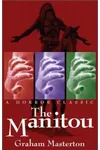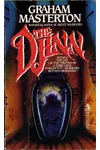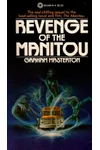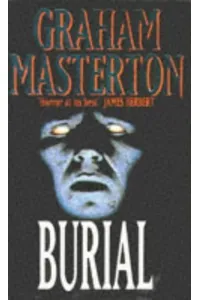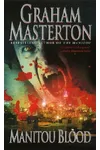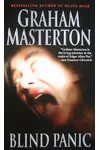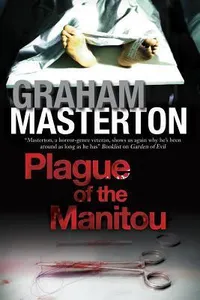Step into the spine-chilling world of Harry Erskine, where a conman-turned-mystic battles ancient evils with wit and grit! Graham Masterton’s Harry Erskine series is a horror gem, blending Native American lore, Arabian mythology, and supernatural thrills. This six-book saga follows Harry’s transformation from a fake psychic to a formidable foe against otherworldly forces, delivering dread and excitement in equal measure.
With its fast-paced plots, lovable characters, and a creeping sense of doom, the series hooks horror fans craving something bold and original. Ready to face the terrors of Misquamacus and beyond? Let’s dive into Harry Erskine’s haunting journey!
How Harry Erskine Began
British horror maestro Graham Masterton launched the Harry Erskine series in 1976 with The Manitou, inspired by his fascination with Native American mythology and his late wife’s pregnancy. The idea of a vengeful spirit reborn through a modern body sparked a novel that skyrocketed Masterton to horror fame. The book’s success, selling over a million copies in six months, led to a 1978 film starring Tony Curtis and spurred a series that spans decades.
Masterton’s knack for weaving cultural myths with visceral horror set the stage for Harry’s adventures. His experimental streak—seen in blending genres and collaborating with authors like William S. Burroughs—shaped a series that’s as unpredictable as it is terrifying.
The Heart of Harry Erskine
The series kicks off with The Manitou (1976), where Harry, a self-styled psychic, encounters Karen Tandy, whose neck tumor is the reborn Native American shaman Misquamacus, hell-bent on avenging his people. Harry teams with medicine man Singing Rock for a magical showdown. Revenge of the Manitou (1979) ups the stakes as Misquamacus returns, possessing a child to unleash chaos. Burial (1994), often called the series’ peak, sees entire cities collapse under Misquamacus’ wrath, with Harry facing apocalyptic horror.
The Djinn (1977) stands out, swapping Native lore for Arabian mythology. Harry investigates his godfather’s suicide and a cursed jar housing a malevolent genie with 40 deadly forms. Themes of historical guilt—European settlers’ crimes against Native Americans or colonial meddling in the Middle East—run deep, paired with Masterton’s gory, fast-paced style. Set in modern America, from New York to Miami, the series blends gritty realism with occult terror, keeping readers on edge.
Harry’s growth from skeptic to powerful mystic, guided by allies like Singing Rock, anchors the series. Masterton’s vivid prose and knack for escalating dread make each book a pulse-pounding ride, with Misquamacus’ evolving powers keeping Harry (and readers) guessing.
Why Harry Erskine Resonates
The Harry Erskine series carved a niche in horror with its bold mix of cultural mythology and supernatural shocks, earning comparisons to Stephen King’s Carrie and Peter Straub’s Ghost Story. Fans praise its relentless pacing and Harry’s roguish charm, while Masterton’s fearless gore and intricate lore appeal to those craving visceral thrills. Though less mainstream than King, the series’ cult status endures, with The Manitou’s film adaptation and sporadic releases keeping it alive.
Its exploration of historical wrongs through a horror lens feels timeless, resonating with readers who love stories that confront the past’s shadows. For horror aficionados, Harry Erskine remains a thrilling, under-the-radar treasure.
- Publication Years: 1976–2015
- Number of Books: 6
- Notable Adaptation: The Manitou (1978 film)
Grab The Manitou and dive into Harry Erskine’s world of horror and heroism. Will you brave Misquamacus’ wrath?
